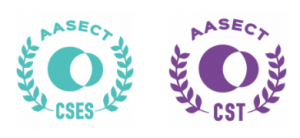Conflict in the Workplace: What to Do About Them
Conflict in the Workplace: What to Do About Them
Whether you’re working in an office or from home, you’ve probably noticed a conflict in the workplace at least once. It might have been when certain expectations were not met or when the communication between supervisors and employees was not efficient, yet conflicts are quite common in any type of workplace.
However, there are certain things you should learn how to manage to protect your mental and emotional health. To help you thrive in a healthy, sustainable environment, we took a look at the types of conflicts at work.
Different Leadership Styles
A leadership style becomes an issue if a new leader is introduced in the company and all employees must adapt to a new way of working and communicating. For instance, your previous boss might have been more laid-back and preferred a casual way of working. This might have implied that you could have been a few minutes late to work, had flexible deadlines, or reported on your work while sipping coffee in the hallway.
Your new leader might have a completely different style of leading the company. They might be strict and highly technical, so you will need to be detailed in your work and report in a more concentrated way than you’re used to. This can create conflicts as everyone in the team is used to working in a certain way, so adjusting to all the changes might take time and patience.
Work Style Conflicts
There are various work styles, just as there are various leadership styles. While some people like to work in teams, others are more productive working alone. Some people can finish a task with no additional guidance, yet others prefer outside input and guidance at every stage. Some people work better under pressure, while others prefer to finish their chores quickly.
Here, as well as in any workplace disputes or contact with other people, the same concept of mutual respect and understanding is applicable. Regardless of our preferred working methods, teams occasionally need to work together to generate ideas that are better than what any one person could come up with on their own.
Conflicts around Different Personalities
We won’t always get along with everyone we meet, and it might be challenging to deal with someone whose personality offends us. It’s important to keep in mind that people are not always what we perceive them to be. This brings up the subject of comprehension and empathy again. Don’t let what you’ve seen dictate how you’ll always feel about someone.
The best way to increase comprehension and empathy in workplace communication The better you get to know your peers, the easier it will be to understand them and their actions.
Discrimination at Any Level
Conflict at work can get more serious at this point, and human resources may need to get involved. There is a critical necessity for the business to expressly highlight open-mindedness, acceptance, and understanding if there is harassment or discrimination taking place because of age, race, ethnicity, gender, or whatever the case may be.
All of us can learn to get along. Being able to work with people from different cultural backgrounds is an excellent way to learn more about the world. A diverse team is a company’s strength and not its weakness, yet learning how to make the most of it is where many businesses fail to succeed.
Conflicts around Ideas
When it comes to concept brainstorming, conflict presents a fantastic chance to improve the idea. Employees must be able to listen to others’ ideas, express their own, and then put all the best parts of the puzzle together to create a magnificent solution.
If two people have conflicting project ideas, they may consult each other and mutually choose one or the other. They might also try to reach a compromise so that both perspectives can be heard and a stronger result of their cooperation emerges. If necessary, they could speak with a superior or a different coworker to mediate the situation or get their perspective on the chosen course of action.
Conflict Resolution
The first step is to take a deep breath and acknowledge that conflict is real. Next, talk with the other person(s) concerned to come up with a plan to resolve the issue before the tension between you becomes intolerable.
Keep things from turning passive-aggressive. Deal with the conflict before it escalates. Don’t let your feelings control you. Remember that there are always two sides to every story, and say what needs to be said without shouting or being rude. It’s possible that what someone else was feeling during their contact with you wasn’t always the same as what you were feeling. Be receptive to different perspectives. Recognize that you aren’t always right in advance.
People should get together to discuss and, more importantly, to listen. Engage in conversation with one another while drawing on your empathy. Make sure you both have a chance to say everything you need to say by taking a seat somewhere.
Don’t just wait for your moment to speak; pay attention to what the other person has to say. Pay close attention to what they say and make an effort to think and feel like they do. Make sure you comprehend what they meant to say, not simply what you think they were saying, by asking questions.
Think about your behavior from both perspectives. To overcome the issue, it helps to comprehend the other person’s perspective and what they are thinking and feeling.
Consider where you agree instead of where you disagree. Just keep in mind that we are all human. We make mistakes and misinterpret events. Empathy for one another can help us overcome disagreements and make each other better individuals.
In Final Words
Conflicts will happen, yet how you react to them is what differentiates healthy environments from unhealthy ones. Even if you think that your opinion cannot change a thing, keep in mind that you’re a part of the workforce in the company, and often, it takes only one person to lead to a positive change.
If you have an HR department or work for one, ask us about special packages to help you out of difficult situations.
About Life Coaching and Therapy
Life Coaching and Therapy (LCAT) is a therapy and coaching practice that transforms our clients lives through our flexible. Multi-technique approach and pleasure-skills training provided by systematically-trained and licensed therapists!
 Get to know our founder and owner, Amanda Pasciucco, (a.k.a. The Sex Healer) PhD, Licensed Marriage and Family Therapist (LMFT), and an AASECT Certified Sex Therapist (CST) that has developed innovative therapy programs and therapy videos that get results.
Get to know our founder and owner, Amanda Pasciucco, (a.k.a. The Sex Healer) PhD, Licensed Marriage and Family Therapist (LMFT), and an AASECT Certified Sex Therapist (CST) that has developed innovative therapy programs and therapy videos that get results.
Our team of compassionate, licensed therapists and certified sex therapists help all clients who visit us for a variety of personal, relationship, intimacy and sex problems.
LCAT provides on-site appointments, as well as video chat and text therapy programs.
Learn more about how LCAT can help improve your life at What We Do.







